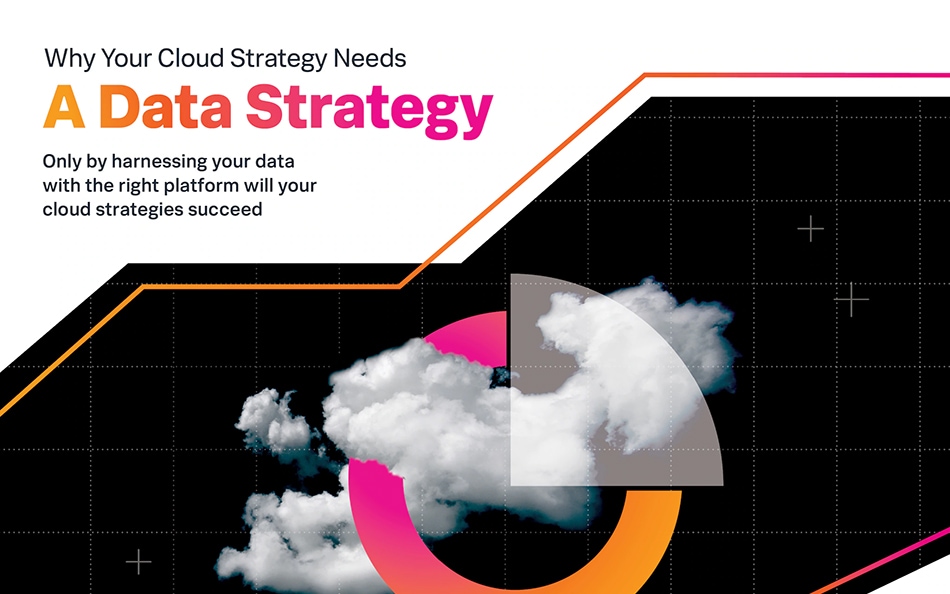What are Cloud Service Providers (CSPs)?

Most businesses use cloud services. That’s because, unlike traditional infrastructure, cloud service providers provide flexible, customizable, and cost-effective resources.
So, in this article, let's find out:
- What exactly are cloud service providers?
- Best practices for choosing the right provider.
- Critical challenges with them.
- The top 5 CSPs.
Defining cloud service providers
Cloud service providers (CSPs) are third-party companies that offer cloud-based services. CSPs enable individuals and businesses to access and use servers, storage, databases, and ready to go web applications.
The cloud market saw 175% growth from 2022 to 2023, which shows that more than 90% of companies have moved at least some of their business to the cloud. The reason behind this shift is the flexibility and cost efficiency of cloud services.
They operate on a pay-as-you-go model — here you only pay for the services you consume and can scale according to your needs. Due to this growing demand, public cloud revenue is expected to hit 690.30bn US dollars in 2024.
Services that CSPs offer
Cloud service providers offer three primary kinds of solutions. Each solution caters to a specific group of users. Let's have a look:
Software as a service (SaaS)
In SaaS, cloud providers host applications and make them available to users worldwide. It saves you from installation and maintenance expenses as you don't have to install software on your device. Instead, you simply open a web browser, connect to the internet, and access the application.
With a staggering 15 billion customers worldwide using SaaS solutions, the demand for these services is undeniable. They work on a classic approach where you pay once to buy the license. That means you can try several systems with little investment.
(Related reading: cloud cost trends.)
Platform as a service (PaaS)
PaaS holds a 20% share of the cloud service market. With PaaS, developers no longer need to deal with the underlying and complex IT infrastructure. Instead, your devs can create, deploy, and manage cloud applications — while paying providers to own and manage the infrastructure.
Streamlining the entire development process, PaaS provides you with:
- A ready-to-use environment with libraries and databases.
- Tools necessary for application management.
Since PaaS is also an on-demand model, you only pay for the resources you use.
Infrastructure as a service (IaaS)
IaaS cloud service delivers virtualized computer resources online. Since it's a rented infrastructure, consumers can create the necessary environment. It offers the following components:
- Virtual machines
- Storage
- Networking
The growth rate of the IaaS cloud market was 327% in 2023. It's growing fast because this model is flexible and cost-effective. If you choose IaaS, here’s what you’ll get:
- Access to shared resources of the existing platform.
- Complete control of infrastructure so you don't have to maintain physical hardware.
- Details about resources like server images and storage on demand.
(Read our complete guide to cloud service models: SaaS vs. PaaS vs. IaaS.)
Challenges with cloud service providers
While cloud computing resources are affordable and powerful options for businesses, they pose pressing challenges too.
Lack of trust. Since the provider has the upper hand control over the cloud, it’s difficult for users to understand where their data is held and how it is protected.
Compliance issues. Compliance regulations vary from country to country, making it difficult to interpret the rules. Providers and consumers need to be 100% compliant, but complex and inconsistent legal language makes this nearly impossible.
Security. Due to security issues like botnets, account hijacking, and permanent data loss, customers have doubts and are not ready to deploy their business with the cloud. If a security issue occurs, users can sue the providers.
Data lock-in. The biggest challenge with cloud service providers is that different vendors use different data formats. This way, it becomes difficult to move data to another provider. So, cloud service providers must ensure flexible data migration.
(In the cloud, it’s important for customers to understand the shared responsibility model.)
How to choose CSPs
Cloud computing has rapidly evolved while offering businesses a variety of service providers and solutions to meet their diverse needs. However, with these choices comes the challenge of selecting the right cloud provider that aligns with your specific requirements.
So, here’s what you must look for when choosing the right cloud service provider for your company:
SLAs
You should choose a cloud service with Service Level Agreements (SLAs). These agreements outline the resources and performance guarantees from cloud service providers.
- Memory size
- CPU speed
- Storage size
- System uptime
A great example is the Amazon EC2 instance, which offers a 1.0-1.2 GHz processor, 1.7 GB memory, and 160 GB of storage.
A provider may exploit these agreements and deliver fewer resources or lower performance than promised. That's why you must rely on third-party tools to ensure SLA accuracy.
Scalability
Scalability makes systems resilient to outages. That’s why you should choose cloud service providers that prioritize scalability and elasticity. This allows you to adjust your resources according to your needs. Here are two main scalability types and their purpose:
- Vertical scaling allows you to add more RAM or a faster CPU to a server.
- Horizontal scaling adds more servers and deploys new applications.
Availability & reliability
Outages and interruptions can cause financial and reputational losses. That's why availability and reliability should be the key features to look for when choosing a cloud service provider.
Availability measures how often you can access the system or service. Most cloud providers provide high availability, which aims for 99.9999% uptime. It means you experience only 5 minutes of downtime a year.
Top 5 cloud service providers (CSPs)
Here are the top 5 cloud service providers:
Amazon Web Services (AWS)
Amazon Web Services (AWS) dominates the market, as it holds 32% of the cloud market share. In 2023, it dominated the global IaaS industry with a 50% market share. You can develop complex applications quickly and efficiently using AWS. It provides data protection with advanced infrastructure at its data centers that are controlled by:
- Uninterrupted power supply
- Temperature control of servers
- Automatic fire detection
Netflix, Airbnb, and Coca-Cola are among its users.
Google Cloud Platform (GCP)
GCP allows you to host applications on the infrastructure that Google uses. It offers the following cloud services:
- Compute engines to run large-scale workloads.
- Cloud storage to store files of any size.
- App engine to develop applications.
If you want to work with big data, GCP would be perfect for you. Its Identity and Access Management (IAM) feature adds an extra security layer and gives you control over who can access your data. You can scale your resources as needed, as it also works on a pay-as-you-go model.
Microsoft Azure
Microsoft Azure provides on-demand infrastructure for running applications, storing data, and developing new applications. With Azure, you can build, deploy, and test both web and mobile applications.
Like AWS and GCP, Azure also offers identity and access management features, which give you complete access control. It doesn't charge any upfront fee, and you pay only for the used resources.
IBM Cloud
IBM Cloud combines PaaS and IaaS to provide fast deployment for both small teams and large enterprises. Their global data centers allow deploying applications where your users are located.
The best part is that the billing remains the same in all locations and it provides free networking, AI/machine learning, and storage tools. Coca-Cola and Etihad Airways are IBM Cloud users.
Alibaba Cloud
Though Alibaba Cloud is a China-based provider, people from Europe and Latin America indicate willingness to use Alibaba Cloud in the future. Here are some features of Alibaba cloud:
- Offers IaaS, PaaS, SaaS, and FaaS environments.
- More affordable than other providers.
- More availability zones in Asian than other non-Asian CSPs provide.
However, customers outside Asia might face problems hosting their business globally due to its limited data centers.
Consider your needs
Before you choose a cloud service provider, consider your business needs. Do you need flexibility and scalability, or are you focused on cost savings? You must also look for providers that provide security, compliance certifications, and data protection policies.
See an error or have a suggestion? Please let us know by emailing splunkblogs@cisco.com.
This posting does not necessarily represent Splunk's position, strategies or opinion.
Related Articles
About Splunk
The world’s leading organizations rely on Splunk, a Cisco company, to continuously strengthen digital resilience with our unified security and observability platform, powered by industry-leading AI.
Our customers trust Splunk’s award-winning security and observability solutions to secure and improve the reliability of their complex digital environments, at any scale.


